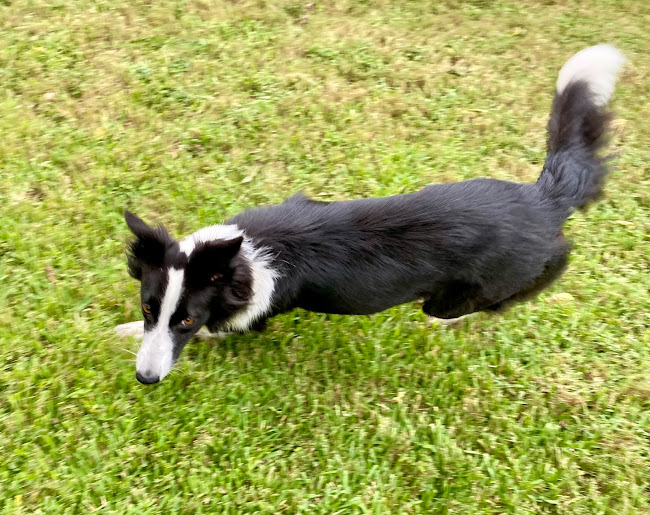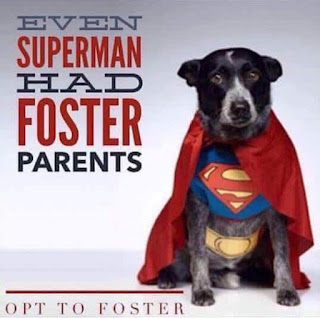There are many training methods that are effective, but as trainers and animal caregivers we should ask ourselves what is in the best interest of the dog? Even if a training style “works” is it still ok? What are the best practices?
Let’s examine what we know: positive reinforcement training is scientifically proven to be quicker, longer lasting, and more effective in changing undesirable behavior and teaching dogs new behaviors, than is aversive training tactics (for example with electronic shock collars, which unfortunately I see in action almost daily). So even if a “trainer’s” endpoint of interest is just to “train a dog easily” or “quickly” or "correct bad behavior," they will still get there the fastest and have the most reliable results using positive reinforcement methods.
Conversely, if your endpoint of interest is to have a great relationship with your dog, keeping them happy and mentally healthy, confident, and yes learn the behaviors that are important to you for sport or fun so they can win in life and amongst their peers, then R+ is your ally.
Here is how the American Veterinary Society of Animal Behavior sums it up:
“Based on current scientific evidence, the American Veterinary Society of Animal Behavior recommends that only reward-based training methods are used for all dog training, including the treatment of behavior problems. Aversive training methods have a damaging effect on both animal welfare and the human-animal bond. There is no evidence that aversive methods are more effective than reward-based methods in any context. AVSAB therefore advises that aversive methods should not be used in animal training or for the treatment of behavior disorders.”
Here is a list of peer-reviewed scientific publications to back up these ideas and support these statements, as well as the position statement on humane dog training from the American Veterinary Society of Animal Behavior published this year (2021):
https://avsab.ftlbcdn.net/wp-content/uploads/2021/08/AVSAB-Humane-Dog-Training-Position-Statement-2021.pdf?fbclid=IwAR1_4liRtszoRiV3MKRKsLCWt7kkp1mRt3OkoyQOFKiXrwUp9PXweyZvJYs
A literature review showing science-based evidence that positive reinforcement training is more effective than aversive training:
1. Ziv G. The effects of using aversive training methods in dogs—A review. J Vet Behav Clin Appl Res. 2017;19:50-60.
2. Fernandes J, Olsson IA, de Castro A. Do aversive-based training methods actually compromise dog welfare?: A literature review. Appl Anim Behav Sci. 2017;196:1-12.
3. Makowska I. Review of dog training methods: welfare, learning ability, and current standards. https://spca.bc.ca/wp-content/uploads/dog-training- methods-review.pdf. Published 2018. Accessed September 1, 2020.
4. Vieira de Castro, AC, Fuchs D, Munhoz Morello G, Pastur S, de Sousa L, Olsson IAS. Does training method matter? Evidence for the negative impact of aversive-based methods on companion dog welfare. PloS one 2020;15(12): e0225023.
5. Deldalle S, Gaunet F. Effects of 2 training methods on stress-related behaviors of the dog (Canis familiaris) and on the dog–owner relationship. J Vet Behav. 2014;9(2):58-65.
6. Cooper JJ, Cracknell N, Hardiman J, Wright H, Mills D. The welfare consequences and efficacy of training pet dogs with remote electronic training collars in comparison to reward based training. PLoS One. 2014;9.9:e102722.
7. Haverbeke A, Laporte B, Depiereux E, Giffroy J-M, Diederich C. Training methods of military dog handlers and their effects on the team’s performances. Appl Anim Behav Sci. 2008;113(1-3):110-122.
8. Schilder MB, van der Borg JA. Training dogs with help of the shock collar: short and long term behavioural effects. Appl Anim Behav Sci. 2004;85(3- 4):319-334.
9. Arhant C, Bubna-Littitz H, Bartels A, Futschik A, Troxler J. Behaviour of smaller and larger dogs: Effects of training methods, inconsistency of owner behaviour and level of engagement in activities with the dog. Appl Anim Behav Sci. 2010;123(3-4):131-142.
10. Blackwell EJ, Bolster C, Richards G, Loftus BA, Casey RA. The use of electronic collars for training domestic dogs: estimated prevalence, reasons and risk factors for use, and owner perceived success as compared to other training methods. BMC Vet Res. 2012;8(1):93.
11. Casey RA, Loftus B, Bolster C, Richards GJ, Blackwell EJ. Human directed aggression in domestic dogs (Canis familiaris): Occurrence in different contexts and risk factors. Appl Anim Behav Sci 152, 52-63. 2014;152(52-63).
12. Casey RA, Loftus B, Bolster C, Richards GJ, Blackwell EJ. Inter-dog aggression in a UK owner survey: prevalence, co-occurrence in different contexts and risk factors. Vet Rec. 2013;172(5):127.
13. Herron ME, Shofer FS, Reisner IR. Survey of the use and outcome of confrontational and non-confrontational training methods in client-owned dogs showing undesired behaviors. Appl Anim Behav Sci. 2009;117(1- 2):47-54.
14. Hiby EF, Rooney NJ, Bradshaw JWS. Dog training methods: their use, effectiveness and interaction with behaviour and welfare. Anim Welf. 2004;13(1):63-69.
15. Reisner IR, Houpt KA, Shofer FS. National survey of owner-directed aggression in English Springer Spaniels. J Am Vet Med Assoc. 2005;227(10):1594-1603.
16. de Castro ACV, Barrett J, de Sousa L, Olsson IAS. Carrots versus sticks: The relationship between training methods and dog-owner attachment. Appl Anim Behav Sci. 2019;219:104831.
17. China L, Mills DS, Cooper JJ. Efficacy of Dog Training With and Without Remote Electronic Collars vs. a Focus on Positive Reinforcement. Front Vet Sci. 2020;7:508.
18. Rooney NJ, Cowan S. Training methods and owner-dog interactions: Links with dog behaviour and learning ability. Appl Anim Behav Sci. 2011;132(3-4):169-177.
19. Masson S, Nigron I, Gaultier E. Questionnaire survey on the use of
different e-collar types in France in everyday life with a view to providing recommendations for possible future regulations. J Vet Behav. 2018;26:48-60.
20. Mormède P, Andanson S, Aupérin B, et al. Exploration of the hypothalamic–pituitary–adrenal function as a tool to evaluate animal welfare. Physiol Behav. 2007;92(3):317-339.
21. Mills DS, Marchant-Forde JN, eds. The Encyclopedia of Applied Animal Behaviour and Welfare. CABI; 2010
Play is one of the best primary reinforcements for my group:
Pearls:
- First, do no harm
- Science supports the best practices of positive reinforcement (R+) training methods




















































